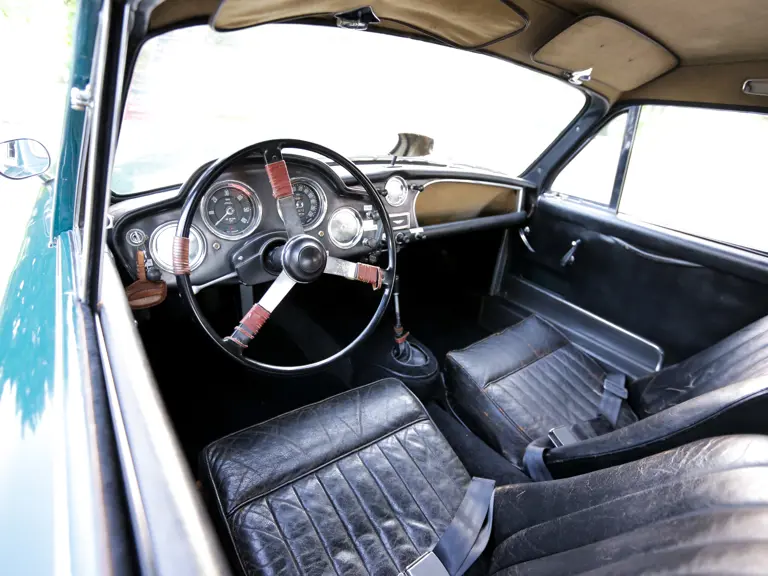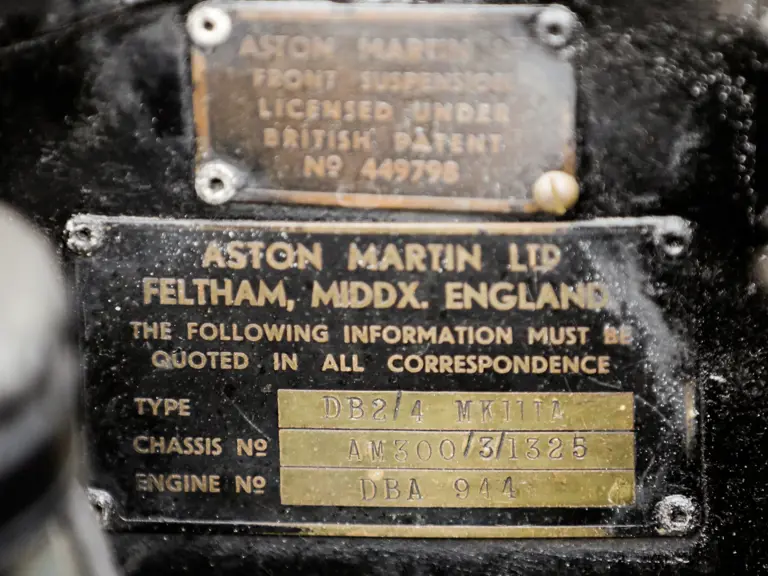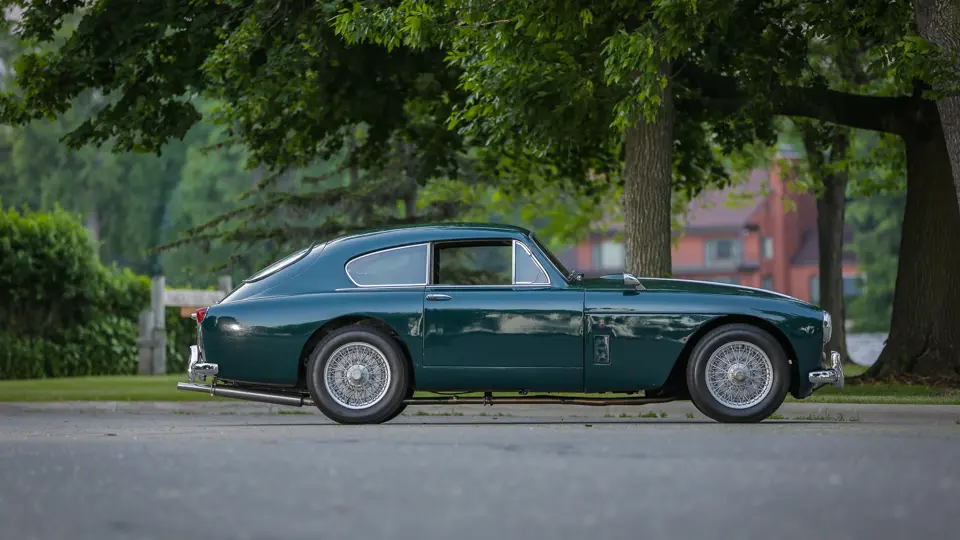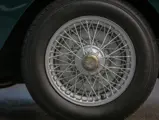
1957 Aston Martin DB2/4 Mk III
{{lr.item.text}}
£184,800 GBP | Sold
{{bidding.lot.reserveStatusFormatted}}
- One of two Mk IIIs prepared to DBC racing specification
- Not known to the Aston Martin Owners Club since 1960
- Believed to have been raced in South Africa, Rhodesia, and Angola
- Mechanically rebuilt by noted marque specialists
214 bhp, 2,922 cc double overhead-camshaft inline six-cylinder engine, three Weber carburettors, four-speed manual transmission, independent front suspension with coil springs, live axle rear suspension with coil springs and radius rods, and four-wheel hydraulic drum brakes. Wheelbase: 2,515 mm
This car was extensively documented by the previous owner, and it was even featured in the North American Aston Martin magazine Vantage. As mentioned in the article, he first learned of AM300/3/1325 in October 2008, when it was offered to him by a dealer in Japan. However, the pictures were poor, so he chose not to pursue the Mk III. Surprisingly, a year later, his company bought what turned out to be the same car. After discovering that it was the 25th of only 551 Mk IIIs built, he wrote to the factory for more information. He received an excited response from the AMOC, who told him that the car had been missing since 1960.
As the story goes, chassis 1325 was built for export with left-hand drive and the odometer in kilometres, and it was ordered by Belgian concessionaire Mannes for a Mr Therasse, of Nivelles. It had a DBA engine with dual exhaust and 178 brake horsepower, and it was finished in Peony Red with black leather and carpets. The car was delivered on 29 June 1957, and Therasse covered 6,500 kilometres by September, and then 2,700 more two weeks later. In his first six months, he drove 12,000 kilometres, and according to the factory service records, Aston Martin rebuilt the engine twice.
Therasse had recorded 20,000 kilometres by September 1958, at which point the engine was rebuilt at the factory for a third time to DBC racing specification. That suggests that he had been racing all along, and he was rumoured to have participated in the Rome-Liege-Rome and Tulip rallies in 1957, 1958, and 1959. Thus far, proof is elusive.
In any event, the DBC engine was a real fire breather, as it had triple Weber carburettors with velocity stacks, special manifolds, high compression pistons, DB3S cams, and a valve gear. So equipped, the engine produced 214 brake horsepower, which was 50 brake horsepower more than stock. It was discovered that only one other car was built to these specifications, and it was built for the 1958 Cuban Grand Prix.
When Therasse had driven around 30,000 kilometres, he sold 1325 to a fellow Belgian, G.V.S Pearson, in Brussels, in 1960. Pearson sold the car to a buyer in South Africa shortly afterwards, by which time it was painted dark green. The next 30 years of 1325’s history were blank, until a New Zealander who had grown up in Rhodesia chimed in. He recalled working on the Aston in the early 1960s and said it was raced in Rhodesia, South Africa, and Angola until at least 1965, when the Rhodesian civil war began. The car still has a BMRC (Bulawayo Motor Racing Club) sticker on the back window.
Discovered in storage in South Africa in the mid-1990s, chassis 1325 was serviced and sold to a museum in Japan, from which it was purchased in 2009. Since coming to the U.S., 1325 has been mechanically overhauled by Jon Clerk, at Steel Wings, and by Motion Products. This is believed to be the only DB Mk III in existence with a factory-rebuilt full-race engine option. As it was also James Bond’s car of choice in the novel Goldfinger, a copy of said book and the “Q-Manual” is included for the new owner.
This MK III combines power and patina with a romantic competition history, which is surely an irresistible combination to a genuine sportsman.






















 | London, United Kingdom
| London, United Kingdom



















